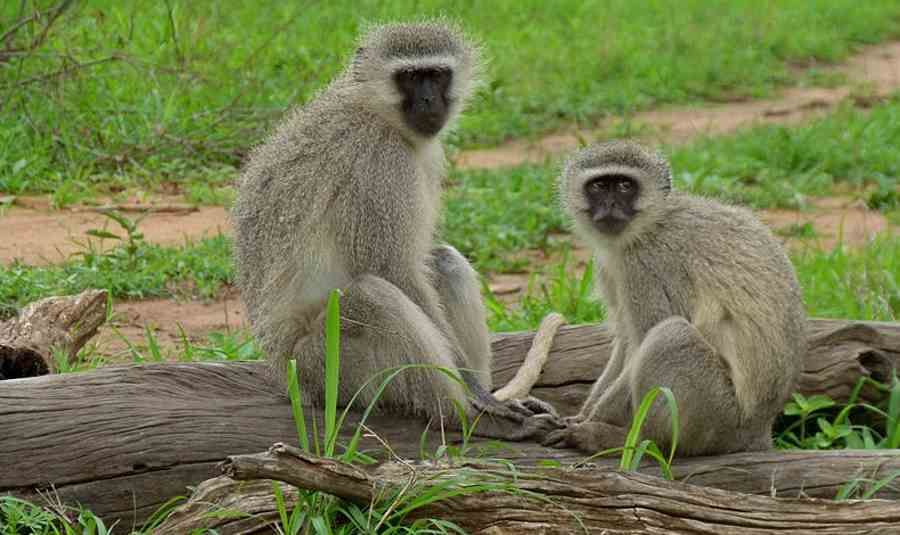
Why monkeys-cats don’t get AIDS?
Among a group of monkeys – catworms – many carry the SIV virus (very similar to HIV). However, these monkeys do not suffer from AIDS. If we understand why, we may be able to develop new therapies against HIV, says Dr. Anna Jasinska.
Catbirds (genus Chlorocebus) – monkeys also known as vervets – are a species of primate that ry is highly prevalent in Africa south of the Sahara.
– To me, vervet is a model that ry provides insight into the processes involved in the biology of the disease b chronic human conditions such as neuropsychiatric diseases, infectious diseases, metabolic diseases. In this model, we study the effects of natural selection and adaptations to the environment, including dangerous pathogens. We also delve into the mechanisms of regulation of gene expression in which hich can affect the development of j body and health – m i in an interview with PAP Dr. Anna Jasinska of the University of California and the Institute of Bioorganic Chemistry of the Polish Academy of Sciences in Poznań.
– The catbird is a major The main vector of SIV virus among the d African primates. This is important for us, because HIV virus – kt ry causes the AIDS pandemic in humans – it is the SIV mutation – m See the researcher. And explains that SIV can be deadly to monkeys.
E.g. in macaques native to Asia as a result of infection with this virus develops a monkey form of AIDS – syndrome The acquired immunodeficiency. Macaques, however, in odr The results of the study, published in the journal , are not natural carriers of this virus and hence lack adaptive mechanisms in them to cope with it.
Dr. Jasinska explains that werwets, which re are natural hosts of the SIV virus, have been infected with the virus for hundreds of thousands of years. Thus, as a result of natural selection, descendants of these individuals have survived until today in which re with SIV fared better.
– Our research signal in natural selection in African catawc showed that these monkeys have developed adaptations for how to survive having the SIV virus, Dr. Jasinska says. – Interestingly, we found also strong signals of natural selection in genes important in regulating infection with other viruses, such re are dangerous in a patient in HIV-infected – m i.
The team’s research, in which The results of the study, which was published in the journal "Nature Genetics" .
Scientists want to learn about defense mechanisms in cats and understand why they do not get AIDS, despite the presence of the disease-causing SIV virus in their bodies. Thanks to this, perhaps in the future it will be possible to design new, more effective treatments os b HIV-infected.
– We are using genetics to understand the biology of the process of coping with SIV in a primate species well adapted to the virus. We are sequencing the catawc genome In the Asian macaques, we study the variability of the disease in the The biologist says. – This is a completely new approach to finding new therapeutic strategies against HIV.
R Variations in tissue weaving, or what age, gender and genetics have to do with gene expression
The SIV virus study is only part of Dr. Jasinska’s research on catawc. In a colony of these animals from the Caribbean in (they were brought there from Africa by sailors in the 17th century) were analyzed fromr rnication of gene expression in between The gut is also involved in the formation of new cells in the context of age, gender and genetic regulation.
Although in every com rce DNA is generally the same, the The genes needed to perform of various tasks. And in each tissue, depending on age and sex, the action of a slightly different set of genes is important. E.g. researchers observed that in m ith age, the activity profile of gen in those involved in the formation of new cells nerve rec and the formation of synapses between them. It’s important m.in. For understanding the process of in biological related to diseases, kt rych sources dles can be stuck on The gut has an important role at different stages of development, e.g. very early, when m zg develops very dynamically.
Scientist interests Also, how The different genetic variants control the expression of genes , because she in turn regulates more complex characteristics, such as. such, kt re are important for health. This approach has been used, for example. in studies on genetic control of the size of the hippocampus, a region of the m The gut plays an important role in min. In memory processes, controlling emotions, reactions to stress. – We have found genetic regulators of the expression of the gene operating in this very region m zgu – said the biologist – We hope that this research will bring us closer to understanding the role of these genes in shaping hippocampal function,” she added.
Dr. Jasinska tells what her work looks like. – As part of this research, I perform so tive activities, such as field work, i.e., studying animals in their natural populations – m.in. collecting observations and taking pr bek for research, chip, releasing them back into the wild – through DNA or RNA analysis to bioinformatics interpretation, he lists.
Source background: PAP – Science in Poland , Ludwika Tomala, fot. CC BY 2.0/Bernard Dupont/Wikimedia Commons

